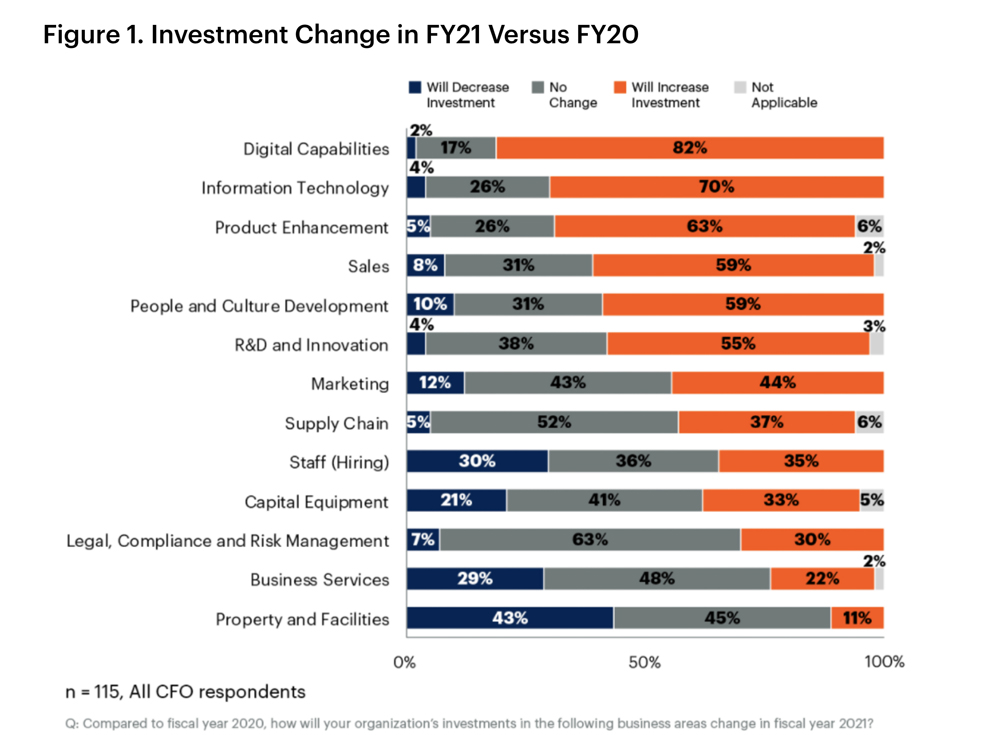For Avaya IT professionals, the ability to apply technology investments to business strategies has never been more important. When considering moving to cloud-based UCaaS or CCaaS solutions, it is essential to focus on the potential benefits to the organization, such as providing a better customer and employee experience, enhancing resiliency or reducing ongoing expenses.
A recent Gartner survey of 115 chief financial officers (CFOs) found that 70 percent of respondents intended to increase spending in information technology in this fiscal year. “As COVID-19 lockdowns were imposed, most finance organizations tried to digitize as many processes as possible to move to a virtual work environment,” said Alejandra Lozada, senior director analyst in the Gartner Finance practice. “CFOs also view technology as a competitive differentiator that can widen the performance gap between their businesses and those of their peers.”
While CFOs are planning to increase their digital investments, the Garner survey also showed that finance leaders are less clear on what digital business means and the technologies with the most significant impact on their businesses.
“CFOs need a clear digitalization language and vision to focus their teams on the key investments and initiatives required to accelerate transformation,” said Lozada. “This clarity is needed to make coherent technology investments that enhance one another.”

Recommendations
Gartner offers three recommendations to help IT professionals guide CFOs through the next steps in the organization’s digital transformation process,
1. Involve cross-functional stakeholders early. Limited visibility into the wider organization can lead to poor technology choices and user challenges. Therefore, IT professionals should engage business units and representative users at the initial stages of a new initiative. What seems clear to a technology expert may be cloudy to a department manager, a remote worker or contact center agent. Early involvement by the business unit can also facilitate buy-in at later stages – especially if the IT team can identify users who can champion the digital transformation initiative.
Depending on the nature of the project, IT leaders may also want to involve the organization’s legal, security and human resource (HR) managers. Their input into the planning process can be invaluable in streamlining the deployment and avoiding serious challenges down the road.
2. Select technologies based on business needs. The technology field is constantly evolving and current market favorites may or may not advance your organization’s business strategies. After all, today’s hot trend could be tomorrow’s Netscape or MySpace.
So, IT professionals should strive to build ongoing relationships with business leaders to keep up with their immediate challenges, potential opportunities and long-term concerns. This has the added benefit of enhancing IT’s position as a strategic business resource for the organization.
3. Maintain a balanced technology investment perspective. While digital transformation projects will undoubtedly continue to be high priorities, IT leaders should balance those investments with the immediate needs of the organization. That might be an upgrade in cybersecurity, the purchase of new desk or mobile handsets or the underlying network infrastructure.
After all, emerging digital technologies like artificial intelligence (AI) and the Internet of thing (IoT) have great potential for the future. But don’t neglect the low-effort, low-complexity initiatives that can help your organization provide better service and support to your users today.
